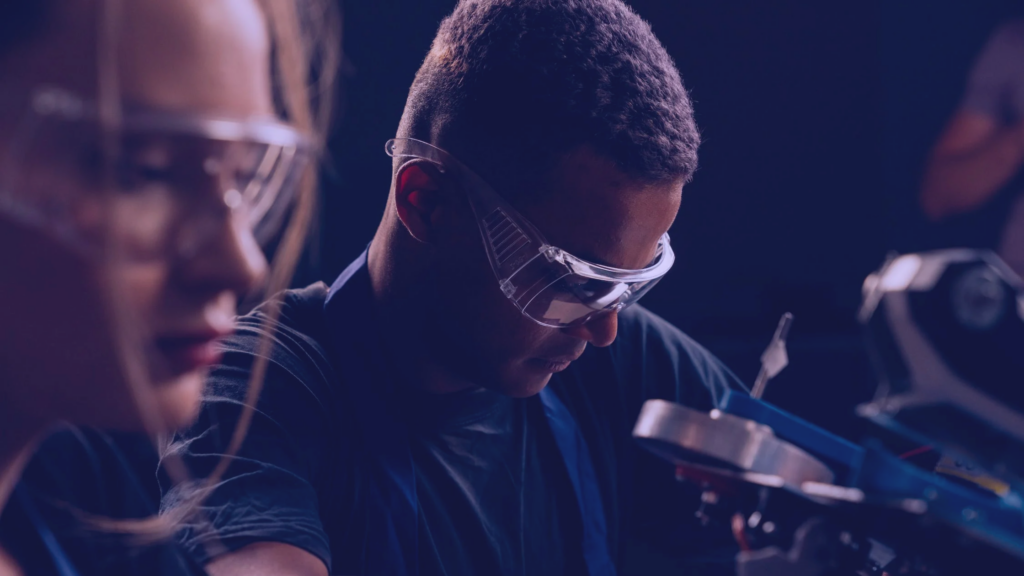Communication is the lifeblood of any thriving manufacturing environment. As factories grow more complex, the demands on effective communication increase exponentially. Fortunately, technology has stepped up to bridge the communication gaps, ensuring that blue-collar workers are informed, aligned, and empowered. In this deep dive, we’ll explore how technology is reshaping communication within manufacturing spaces and why it’s paramount for efficiency, safety, and collaboration.
Digital Communication Platforms: Beyond Traditional Walkie-Talkies
Upgrading the Basics
Once limited to walkie-talkies and static-filled intercoms, today’s manufacturing floors benefit from digital communication platforms. These tools, often smartphone-based, allow workers to exchange messages, images, and even videos in real-time. This eliminates misunderstandings, streamlines tasks, and ensures that every worker has the information they need at their fingertips.
Group Chats and Digital Bulletin Boards
Group chats and digital bulletin boards further enhance these platforms, allowing supervisors to broadcast messages to entire teams or shifts. This ensures uniformity in instructions, reduces the chances of misinformation, and fosters a sense of community among workers.
Wearable Tech: Keeping Hands Free and Information Accessible
Smart Glasses and AR Integration
One of the standout advancements in manufacturing communication is the introduction of smart glasses with Augmented Reality (AR) capabilities. These glasses can display crucial information directly into a worker’s line of sight without obstructing their view. From assembly instructions to safety alerts, AR glasses ensure that workers have instantaneous access to data without needing to consult manuals or digital devices.
Vocal Commands and Instant Translations
Many wearables come equipped with voice recognition technology, allowing workers to relay commands or seek information without manual input. Moreover, in diverse workplaces with multi-lingual teams, some advanced wearables offer real-time translation, breaking down language barriers and ensuring clear, concise communication.
IoT Sensors: Silent Communicators on the Factory Floor
Real-time Monitoring and Feedback
The Internet of Things (IoT) has made machines ‘talkative’. By embedding sensors in machinery, real-time data can be communicated instantly to operators, supervisors, and maintenance teams. If a machine overheats or a component malfunctions, alerts can be sent out immediately, minimizing downtime and potential hazards.
Predictive Maintenance and Preemptive Communication
Beyond immediate issues, IoT sensors can also predict future problems by analyzing trends and performance metrics. This enables preemptive communication, where teams are informed of potential issues before they escalate, allowing for scheduled maintenance and reducing unexpected halts.
Virtual Training Platforms: Enhancing Skill Development Communication
Interactive Tutorials and Simulations
The introduction of virtual training platforms has revolutionized skill development in the manufacturing sector. Instead of mere verbal or written instructions, workers can engage with interactive tutorials or simulations, ensuring they grasp procedures and protocols effectively. This visual, hands-on approach significantly enhances comprehension and retention.
Remote Expert Assistance
Sometimes, a particular problem might require specialized expertise. With virtual training platforms, a remote expert can guide a worker through a procedure, watching via a live feed and communicating instructions in real-time. This not only solves the immediate issue but also serves as a learning experience for the worker involved.
Feedback Mechanisms: Giving a Voice to Every Worker
Digital Suggestion Boxes and Surveys
In large manufacturing environments, individual voices can get lost. Digital suggestion boxes and regular electronic surveys empower every worker to share feedback, raise concerns, or suggest improvements. This democratized approach ensures that valuable insights from the ground level are not overlooked.
Data Analytics for Feedback Interpretation
Collecting feedback is just one half of the equation. By leveraging data analytics, manufacturers can analyze feedback to detect patterns, identify common issues, and develop actionable insights. This makes communication a two-way street, with management not just broadcasting messages but also actively listening.
In the bustling ecosystem of a manufacturing environment, clear communication is both a challenge and a necessity. With the integration of cutting-edge technology, from digital platforms to wearables, the communication paradigm has been positively disrupted. These tools, tailored for blue-collar workers, ensure that information flows seamlessly, instructions are unambiguous, and every worker’s voice is heard. As manufacturing grows even more intricate, one thing remains clear: technology will continue to be the lighthouse, guiding communication to safer, more efficient shores.

